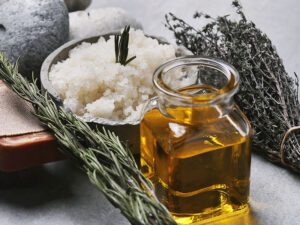Kneading Strokes - Palmer Digital Thumb & Ulnar Border
Kneading is a petrissage stroke used generally after effluerage. The technique is similar in motion to kneading bread. It is a medium depth stroke that relaxes muscle tension and stimulates the skin. It can be done with palms, fingers, thumbs or the side of the hand. its benefits are many to skin, muscles and bone.
Rosser M (2004) tells us the kneading stroke used in massage derives its name from the action of kneading dough, to make bread. The movement used to manipulate fleshy tissues is very similar. It is a medium depth stroke. So, it should be performed after some light gliding effleurage strokes have spread oil and gently introduced your hands to the area being worked on. It’s deepest pressure form is used on fleshy areas with a large enough muscle mass to manipulate with your whole hand. Examples include the thighs and the trapezius muscle of the back. It has many beneficial effects for the skin and underlying tissues.
Palmer Kneading
Palm side of the hand is used to apply light and medium pressure in circular motions with the whole surface of the hand. The light pressure comes from the fingers and thumb being in constant contact. The medium pressure comes through the palm itself. This technique can be done using;
- a single hand (1 hand for kneading the other for tissue support)
- alternating between 2 hands (1 hand then the other over the same fleshy area)
- reinforced (one hand on top of the other for deeper pressure)
- double handed (using 2 hands at the same time)
Thumb Kneading
- The thumb is used to push tissues around and against bone.
- Used in areas as above and also on the face.
- Care must be taken with the amount of pressure applied for the sake of your client and also for the sake of the masseur’s own finger and thumb joints too.
Digital Kneading
- Small circular movement using the fingers.
- Main 3 fingers are used but, not the little finger. Usually it is not long enough to reach.
- Used on smaller more tendinous areas such as ankles, elbows, wrists and knees.
Ulnar Border Kneading
- This technique uses the edge of the hand on the little finger side.
- The hand can be open or more often closed into a fist.
- Using this surface allows more pressure to be applied safely, for the therapist and client, than if fingers or thumbs were used.
Effects of Kneading:
- Increase in lymph and blood flow.
- Warms tissues relieving tension.
- Stretches and compresses tissues.
- Mobilises muscles increasing extensibility and flexibility.
- Deep kneading against bones increased blood supply to those bones.
- Tucker L (2013) says kneading helps remove toxins (lactic acid) especially after exercise.
- Improves skin by increasing blood flow to it and increasing sebum production.
- Increases desquamation (shedding) of top skin layers. Hull R (2011)
- Simulates sweat glands.
- Helps digestion when done in a clockwise motion over stomach.
- Digital and thumb kneading mobilises smaller areas, helps loosen adhesions and can reduce pain.
References:
Rosser, M. (1996) Body Massage Therapy Basics, London, Hodder & Stoughton
Tucker, L. (2016) An Introductory Guide to Massage, London, EMS Publishing
Hull R (2013) Anatomy & Physiology for therapists and healthcare professionals, Cambridge, The Write Idea





















